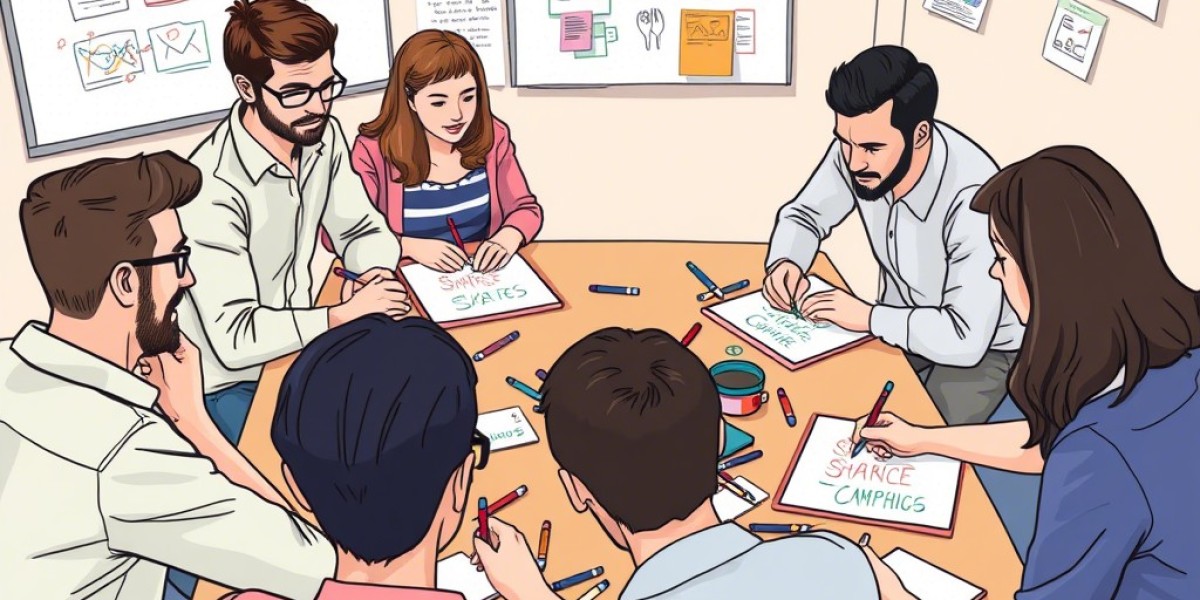Marketing campaigns are the backbone of any business's growth strategy. Whether you're launching a new product, promoting a service, or building brand awareness, a well-planned campaign can make all the difference. But what many marketers overlook is the importance of sketching in the planning process. Sketching isn’t just for artists—it’s a powerful tool that helps marketers brainstorm ideas, organize thoughts, and bring concepts to life. In this article, we’ll explore how sketching plays a vital role in creating successful marketing campaigns and provide practical tips to integrate it into your workflow.
Why Sketching Matters in Marketing
1. The Power of Visual Thinking
Humans are visual creatures. Research shows that 90% of the information our brains process is visual, and we can understand images much faster than text. This is where sketching comes in. By putting pen to paper (or stylus to screen), marketers can visualize their ideas in a way that’s easier to grasp and share with others.
For example, imagine you’re planning a social media campaign. Instead of writing long paragraphs about how the posts will look, you can sketch out a simple layout. This not only clarifies your vision but also makes it easier for your team to understand and contribute.
2. Bridging the Gap Between Ideas and Execution
Sketching acts as a bridge between abstract ideas and actionable plans. When you have a vague concept in your mind, sketching helps you turn it into something tangible. It’s like creating a rough draft before writing the final version of an essay. For instance, if you’re designing a billboard ad, sketching allows you to experiment with different layouts, fonts, and visuals without investing too much time or resources upfront.
3. Accessibility Across Teams
Not everyone on your marketing team may be a designer, but almost anyone can draw basic shapes or lines. Sketching levels the playing field, allowing everyone to participate in the creative process. This inclusivity leads to more diverse ideas and better collaboration. Whether you’re working with copywriters, strategists, or data analysts, sketching ensures everyone can contribute meaningfully.
How Sketching Enhances Campaign Planning
1. Brainstorming and Idea Generation
When you’re brainstorming, sketching helps you capture ideas quickly and efficiently. You don’t need to worry about perfection—just focus on getting your thoughts down on paper. For example, you can create a mind map to explore different themes for your campaign or doodle rough layouts for social media posts. This free-flowing approach encourages creativity and ensures no good idea gets overlooked.
2. Organizing Campaign Elements
Once you’ve gathered your ideas, sketching helps you organize them into a coherent plan. For instance, you can sketch a timeline of your campaign, mapping out when each piece of content will go live. Or, you can create a customer journey map to visualize how users will interact with your brand at every touchpoint. These sketches act as blueprints, guiding you through the execution phase.
3. Facilitating Collaboration
Sketching also improves teamwork. When you share your sketches with others, they can easily understand your vision and provide feedback. Tools like digital whiteboards (e.g., Miro or Figma) make this even easier, especially for remote teams. For example, during a virtual meeting, you can use a shared whiteboard to sketch out ideas in real-time, ensuring everyone stays aligned.
4. Refining Concepts Quickly
One of the biggest advantages of sketching is speed. You can create multiple versions of an idea in minutes, test them, and refine them until you find the best solution. This saves time and resources compared to jumping straight into detailed designs. For example, if you’re designing a landing page, sketching allows you to experiment with different layouts and features before committing to a final design.
Types of Sketches Used in Marketing Campaigns
1. Storyboards
Storyboards are like comic strips that show how a video or animation will unfold. They’re particularly useful for planning TV ads, YouTube videos, or Instagram Reels. For instance, if you’re creating a promotional video, a storyboard helps you visualize each scene, ensuring the narrative flows smoothly. If you’re short on time or lack artistic skills, you can even use tools like Storyboard Generator AI to automate the process.
2. Wireframes
Wireframes are simple layouts that outline the structure of a webpage or app. They help designers and marketers focus on functionality before adding colors or images. For example, if you’re designing a website for your campaign, a wireframe ensures the navigation is intuitive and the key messages are prominently displayed.
3. Mood Boards
Mood boards are collections of images, colors, and fonts that set the tone for your campaign. They’re useful for deciding on the overall look and feel of your project. For instance, if you’re launching a luxury product, your mood board might include sleek fonts, muted colors, and high-quality images.
4. Journey Maps
Journey maps visually represent the steps a customer takes from discovering your brand to making a purchase. They help identify pain points and opportunities to engage customers. For example, if you notice that users drop off during the checkout process, your journey map can highlight areas for improvement.
Tools and Techniques for Effective Sketching
1. Analog Tools
You don’t need fancy equipment to start sketching. A pencil, paper, and some colored markers are enough to get started. Sticky notes are also handy for organizing ideas. For example, you can use sticky notes to jot down key messages and rearrange them until you find the perfect flow.
2. Digital Tools
If you prefer working digitally, there are plenty of apps available. Procreate and Adobe Fresco are popular among designers, while Canva and Microsoft Whiteboard are user-friendly options for beginners. These tools allow you to create professional-looking sketches without needing advanced drawing skills.
3. Hybrid Approaches
Sometimes, combining analog and digital methods works best. For example, you can sketch by hand first and then scan your work into a computer for editing. This approach gives you the flexibility of traditional sketching with the polish of digital tools.
4. Best Practices
- Keep your sketches simple and clear.
- Focus on communicating your idea rather than making it look perfect.
- Use colors or symbols to highlight important elements.
Real-World Examples of Sketching in Action
1. Nike’s “Just Do It” Campaign
Before becoming one of the most iconic slogans in history, Nike’s “Just Do It” campaign started with simple sketches. These visuals helped the team visualize how the message would resonate with audiences and guided the development of ads, posters, and other materials.
2. Coca-Cola’s Holiday Campaigns
Coca-Cola’s festive ads often begin with storyboards that map out the narrative. These sketches ensure the campaign stays consistent across platforms like TV, print, and social media. For example, the famous polar bear ads were meticulously planned using storyboards to capture every detail.
3. Small Business Success Stories
Even small businesses benefit from sketching. For example, a local bakery might sketch out its menu design or promotional posters before finalizing them. This ensures the final product aligns with the brand’s vision and resonates with customers.
Overcoming Common Challenges with Sketching
1. Fear of Drawing Skills
Many people avoid sketching because they think they’re not good at drawing. But remember, the goal is clarity, not artistry. Stick figures and basic shapes are perfectly fine! The key is to communicate your idea effectively, not to create a masterpiece.
2. Resistance to Low-Fidelity Outputs
Some stakeholders may hesitate to approve rough sketches. To overcome this, explain that these drafts are just the starting point and will evolve into polished designs. You can also use digital tools to add a bit of polish if needed.
3. Time Constraints
If you’re short on time, try rapid sketching exercises. Set a timer for 5-10 minutes and jot down as many ideas as possible. You’ll be surprised at how much you can accomplish in a short amount of time.
Tips for Integrating Sketching Into Your Workflow
- Start Every Project with a Sketching Session: Before diving into detailed planning, take a few minutes to sketch out your ideas. This sets the foundation for the rest of the project.
- Encourage Team Participation: Make sketching a collaborative activity. Invite your team to contribute their ideas, even if they’re not designers.
- Save Your Sketches for Future Reference: Old sketches can inspire new ideas or serve as a reference for future projects. Keep them organized in a folder or digital archive.
Conclusion
Sketching is a simple yet powerful tool that can transform your marketing campaigns. It helps you generate ideas, organize your thoughts, collaborate with your team, and refine your concepts. Whether you’re using pen and paper or digital tools, sketching ensures your campaigns are well-planned and successful. So, the next time you’re planning a marketing campaign, grab a pencil or open your favorite app and start sketching your next big idea today!









